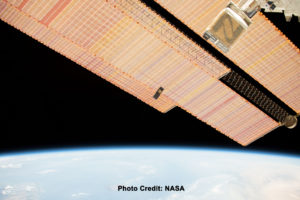Apollo 11: The Launch – 50 years on
Marketing


“We came all this way to explore the Moon, and the most important thing is that we discovered the Earth”
– William A. Anders, Lunar Module Pilot on Apollo 8
Fifty years ago today, Neil Armstrong, Buzz Aldrin, and Michael Collins began a journey that would eventually mark one of the greatest human achievements of all time.
Apollo 11 was only the fourth mission in the programme to successfully carry a crew into space using a Saturn V rocket, which had only carried its first crewed mission six months earlier in December 1968. Standing at 111m tall and 10m wide, Saturn V is less than a third of the height of the Shard in London but remains the biggest rocket of all time.
Since the first humans stood on the surface of the Moon and looked back on the Earth, a lot has changed in space exploration and technology. Humans have launched thousands of satellites into space. Following the Apollo 11 Mission, China became the fifth nation to achieve independent launch capability with their Dong Fang Hong 1 Satellite in 1970, with the Soviet Union, USA, France, and Japan having already achieved this. The purpose of Dong Fang Hong 1 was to broadcast the national anthem for 20 days in orbit. Just two years later, in 1972, the USA launched Landsat 1 to gather data on agriculture, mining, and pollution through remote sensing. The rapid developments in technology have seen big changes in the uses of space exploration. We have developed from earth observation satellites, to weather monitoring and remote sensing; the way we use satellite data to tell us about the earth is always changing.
In recent decades there has been more of a focus on Small Satellites with companies preparing to launch constellations of Small Satellites in to low and medium earth orbit as a more cost-effective mechanism. With this change in demand, comes a change in the launch procedure of a satellite. Traditionally, satellites required their own launch vehicle to enable them to into orbit. Small Satellites have a few options when it comes to finding their way into orbit. The first of which is the ‘piggyback’ payload launch, which makes use of the ability of larger rockets to carry extra weight. In this instance satellites are ejected into orbit after the main satellite has been deployed. Another option for small satellites is deployment from the International Space Station (ISS). After being delivered to the ISS via cargo spacecrafts, CubeSats are placed into deployers and released into their planned orbit. Recently, our first IOD satellite (IOD-1 GEMS) was launched from the ISS.

Image Credit: NASA
We are able to do bigger and better things with space technology than ever before. In 1969 we were able to observe the earth from space, soon after that Landsat 1 was developed with the purpose of monitoring and studying the planet. Now, we are able to observe crop health, detect oil slicks and deforestation from space. Space technology is still developing, with companies such as Virgin Galactic and SpaceX planning to take space exploration further with the development of space tourism, for example.
We provide an opportunity for a fast-track, low-cost, route to test services and technologies with our In-Orbit Demonstration (IOD) programme.
Click here to see footage of the launch: https://moon.nasa.gov/resources/288/apollo-11-launch/